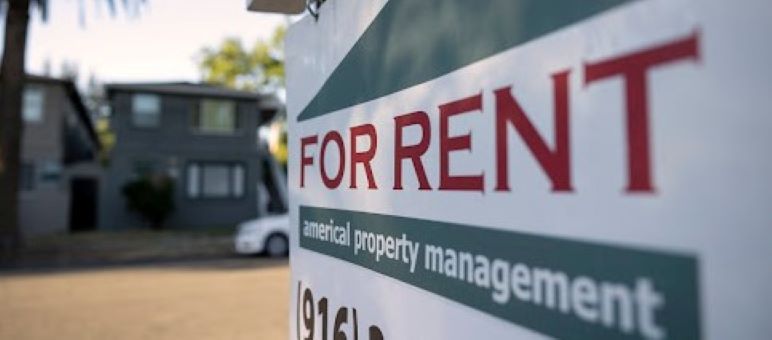Eviction protections for tens of thousands of California households still waiting in line for payments from the state’s multi-billion dollar rent relief program expired Thursday.
Since September 2020, the Legislature has passed and Gov. Gavin Newsom has signed four laws shielding tenants who were unable to pay rent due to COVID-19 from eviction. The most recent extension shielded tenants through June 30 who had applied for rent relief from the state’s $5 billion program by the March 31 deadline but had yet to hear back or receive payments. Those tenants can now be brought to court by their landlords.
“It’s highly unlikely that they are going to get through all these applications by June 30, when the eviction protections expire,” Sarah Treuhaft, vice president of research at PolicyLink, a nonprofit that has been reviewing the state’s rent relief program, said during a press conference this week. “This means they are likely to be evicted and they might eventually get rental assistance.”
Debra Carlton, chief lobbyist for the California Apartment Association, said they have asked their members not to take their tenants with pending applications to court.
The state Department of Housing and Community Development, which administers the program through a contractor, did not respond to multiple interview requests.
The rent relief program has paid more than $3.8 billion to 329,000 households, according to the state’s public data dashboard. More than 28,000 initial applicants and 57,000 people who reapplied have not yet heard back, according to PolicyLink, which has been reviewing weekly program data from the state through Public Record Act requests.
Horne LLP, a Mississippi-based accounting firm that specializes in disaster relief, is being paid a total of $278 million to distribute $4.5 billion of the federal rent relief funds, according to a contract renewal dated April 1 that CalMatters obtained through the Public Records Act on June 17.
State Assemblymember Buffy Wicks, a Democrat from Oakland and co-author of the last extension, acknowledged the program has been “incredibly frustrating.” She said the state housing department had assured her qualifying applications would be paid.
“I think it’s no secret that it’s had challenges,” she said. “And while I’m sympathetic to some of the challenges we’ve had as a state government in terms of dealing with a global pandemic that none of us anticipated, it’s also our job as government to run well especially when you’re talking about critical social safety nets.”
But there’s a silver lining for tenant advocates. A key portion of the now expired law was the preemption of more stringent local measures against eviction, many of which will now go into effect, including in Los Angeles County.
The state faces at least two lawsuits over the program from tenant advocates, who argue it has denied funding to qualifying tenants and isn’t covering the amount of rental debt originally promised.
More than 135,000 people — or nearly a third of all households — who applied for rent relief had their applications rejected as of June 17, according to data CalMatters obtained from the housing department through the Public Records Act. That number spiked in the last few weeks as the program wound down. The lawsuit, which cites the same set of data, says tenants are receiving little to no explanation for their denials, which makes it difficult to contest the final decision.
“Tenants are facing eviction even as their landlords are given these giant checks and tenants who are eligible for assistance are being denied with these cryptic notices that don’t tell them why. It just doesn’t make sense,” said Madeline Howard, a senior staff attorney at Western Center on Law & Poverty, one of the groups suing the state over the program.
Wicks said the latest state budget, approved this week, includes nearly $2 billion to pay back the state for a line of credit opened earlier this year to pay tenants who submitted applications prior to March 31, although it does not include any new funds for rent relief. The program covered rent for up to 18 months between April 1, 2020 and March 31, 2022 for low-income tenants who were financially impacted by COVID-19.
Manuela Tobias is a reporter with CalMatters.


Of course the better viewpoint should be:
“Thousands of CA Landlords Able to Protect their Livelihoods after 2 years in Forced Limbo as Eviction Protections End”
Not everyone has the right or can afford to live where ever they want to live,
Responsible adults know this and make responsible decisions based on reality.
Just make that move before the full impacts of the Biden-Recession hits.
CA Patriot,
All rents lawfully required were paid by the State of CA. So that means that your claim to protect livelihoods was wrong. In fact the CAA negotiated a 100% rent assistance during the time. In the end you are going to need to deal with the current Covid wildfire that has been burning since May and has no sign of stopping. In reality 1 out of 1000 infections gives birth to a new variant, and SCC has 1000 cases a day. It would appear that given the current news, there is likely going to be a NEW eviction moratorium and rental assistance due to the fact that the Covid state of emergency has not ended yet
All rents lawfully required were paid by the State of CA. So that means that your claim to protect livelihoods was wrong. In fact the CAA negotiated a 100% rent assistance during the time. In the end you are going to need to deal with the current Covid wildfire that has been burning since May and has no sign of stopping. In reality 1 out of 1000 infections gives birth to a new variant, and SCC has 1000 cases a day. It would appear that given the current news, there is likely going to be a NEW eviction moratorium and rental assistance due to the fact that the Covid state of emergency has not ended yet